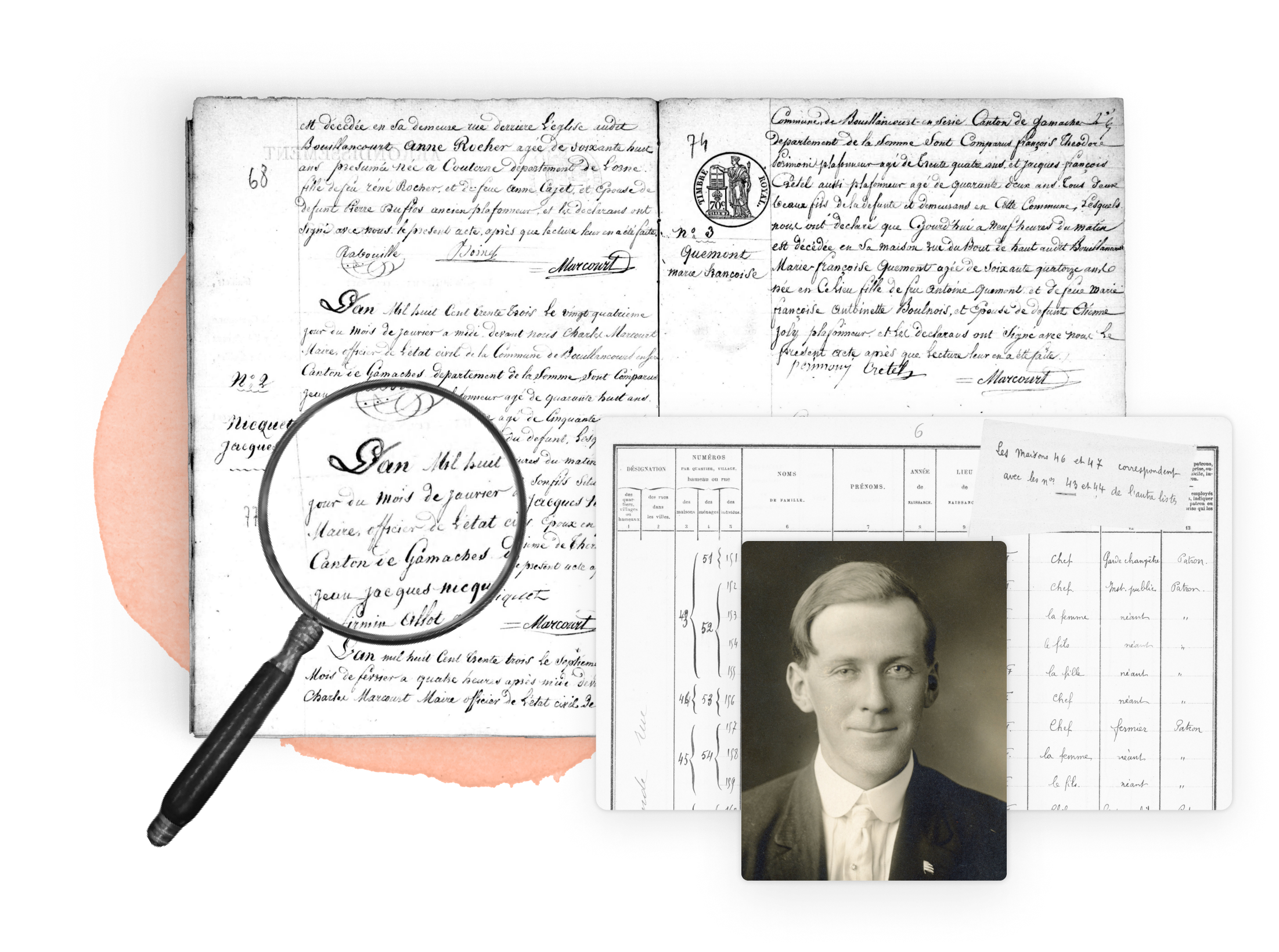Estonian surnames have a unique and interesting history that reflects the country's cultural heritage and linguistic background. The Estonian naming system, like in many other European countries, evolved over time and underwent significant changes throughout history.
History
Until 1809, surnames in Estonia were a privilege of the nobility, primarily of Germanic origin. The common population used nicknames, often denoting their place of residence. In 1809, Estonia witnessed the introduction of surnames as a significant historical event. Back then the surnames were based on occupations, personal traits, or natural phenomena. These newly adopted surnames became the first officially recorded in the region.[1]

A pivotal moment occurred in 1816 when Alexander I, the Russian Emperor, emancipated Estonian peasants from serfdom. This led to a widespread adoption of surnames across various social strata. During the 19th century, Estonia experienced a period of Russification under the Russian Empire, and as a result, some Estonians adopted Russian-style surnames, which often ended in "-ov" or "-ev." This practice was not widespread, and many Estonians continued to use their traditional patronymic-based surnames. The list of eligible categories for obtaining surnames expanded, and in some cases, people were even given the freedom to choose their surnames. This process of "surnaming" continued for nearly two decades, incorporating words and word forms from diverse languages. Consequently, Estonian society saw the emergence of surnames with Estonian, Jewish, Polish, Swedish, and Germanic origins.

In the early 20th century, Estonia gained independence, and a surname reform was implemented to replace the patronymic system with fixed family names. This reform aimed to modernize Estonian society and create a standardized naming system. In an effort to bolster national identity and patriotism, authorities decided to fully Estonianize foreign surnames, which constituted the majority. Propaganda campaigns promoting the eradication of the remnants of the czarist era further fueled this movement. During this period, surnames underwent changes either by adopting grammatical forms characteristic of the Estonian language or through direct translation. During this period, many Estonians adopted new surnames based on their occupations, geographical features, or personal attributes. For example, names like Põld (field), Mets (forest), or Tamm (oak) became common.
Prior to 1934, surname changes were voluntary, but between 1934 and 1940, they became mandatory. The need for name changes extended to residents of the Pskov region, which joined Estonia, resulting in Russian, German, and Jewish surnames being replaced by Estonian ones. However, despite state pressure, a considerable number of people chose to retain their original surnames.
Estonia regained independence in 1991, which led to a new surname reform lasting approximately two decades. Interestingly, Germanic surnames gained popularity during this period. Meanwhile, obtaining Russian surnames, like Ivanov, Vasiliev, Sidorov, Petrov, or Kuznetsov, now requires special permission. This rule also applies to rare Estonian-origin surnames. However, the strictness of these regulations is balanced by the opportunity for individuals to create meaningful surnames from Estonian or non-Estonian words.
Origins and meanings of Estonian surnames
Patronymic surnames
Before the adoption of fixed family names, Estonians used patronymic surnames, derived from the father's given name. These surnames typically ended with "-poeg" (son of) or "-tütar" (daughter of), followed by the father's name. For example: "Jaanpoeg" meant "son of Jaan" and "Jaantütar" meant "daughter of Jaan."
Occupational surnames
With the surname reform in the early 20th century, many Estonians adopted new surnames based on their professions or occupations. For example:
They originated from individuals' traditional livelihoods. A consistent feature is the suffix "-sepp," indicating membership in this occupational group.
Geographical surnames
Nature-based surnames
Estonian surnames often have nature-related meanings, reflecting the country's close relationship with the natural environment. The following names examplify this category:
Very often the nature-based surnames incorporate phonemes like -tamm (oak), -maa (land), -rii (trees), -meri (sea), -mets (forest). Notable examples include:
Adopted surnames
During the Russian Empire's influence in the 19th century, some Estonians adopted Russian-style surnames, usually ending in "-ov" or "-ev." However, this practice was not widespread, and many Estonians retained their traditional patronymic-based names. Borrowed surnames often coexist with Estonian equivalents, such as:
Surnames derived from personal attributes
Some surnames are derived from personal characteristics or traits of an individual or an ancestor. For example:
Today, Estonian surnames reflect a mix of traditional patronymics, historical influences, and more modern occupational or nature-based names. Many Estonian surnames are quite unique and can provide valuable insights into an individual's family history and cultural background. Additionally, the Estonian language itself is known for its rich phonetics, resulting in melodic and distinctive surnames that contribute to the country's cultural identity.
Celebrities with Estonian surnames
Explore more about Estonian surnames
- Search Your Last Name on MyHeritage
- Estonian ethnicity map at MyHeritage
- Estonian vital records at MyHeritage



